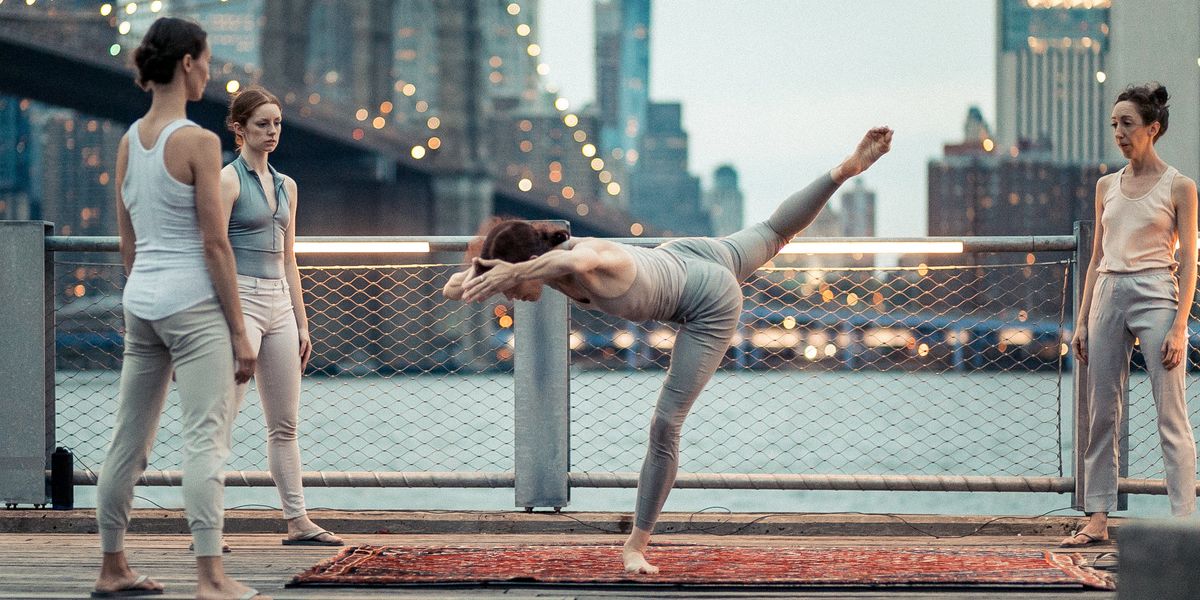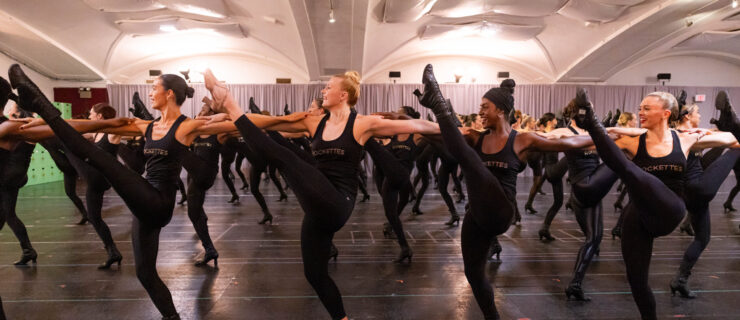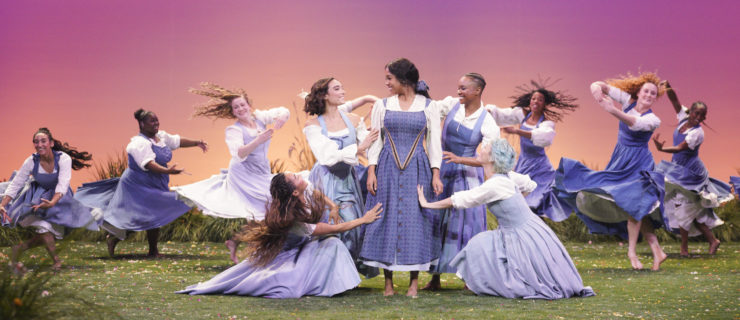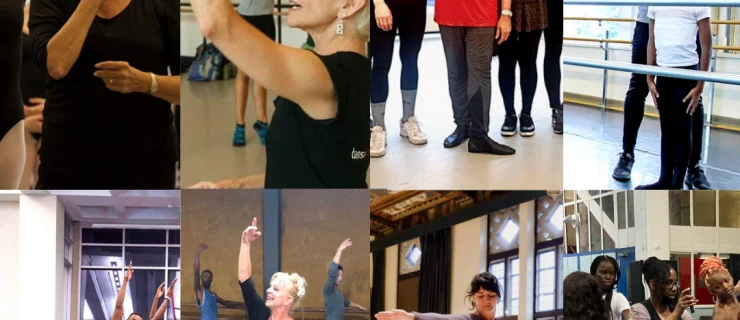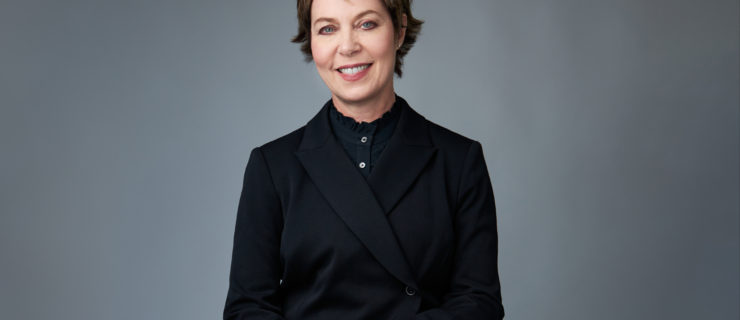Gabrielle Lamb Has Found an Ideal Stage for a Pandemic: A Carpet
What defines a stage these days? While dance artists are figuring that out, Gabrielle Lamb’s richly detailed movement has found a perfect home on a 5×8-foot Persian rug.
The New York City–based choreographer/dancer and self-taught filmmaker has been taking her rug out and about in her Carpet Series, performing captivating solos with her company, Pigeonwing Dance, since mid-July. Twice a week, they perform a 15-minute dance four times, with different music each run. Lamb announces the outdoor locations on Instagram, and plans to continue the shows as long as temperatures allow.
The geometric patterns of the Persian rug echo and amplify Lamb’s idiosyncratic movement vocabulary, which is both intensely intricate and unusually syncopated. She has a way of tangling her long limbs into exotic contours, yet her pathways into and out of her ornamented movements are as interesting as the sculptural elements.
The rug has also found a home on screen with her virtual commission from the Guggenheim’s Works & Process, 5×8, which premiered on August 3 with a score by James Budinich and cinematography by Melissa Wu. Lamb selected three expansive locations in Riverside Park to frame her already well-framed dance.
Lamb recently brought Dance Magazine onto her magic carpet with a conversation about the work.
How did you end up dancing on a rug?
I turned the room in our apartment that we used to use as an Airbnb into my studio, and the rug took up most of the space, so it was by default that the rug became my frame. It also provided a bit of cushion when I taught classes. I added foam tiles and eventually made eight quarantine dances.
At some point, the rug flew out of the room.
Yes, for the Works & Process project, I wanted a more expansive atmosphere, so I had to go outside. It was filmed in May when it was 51 degrees outside. I ran the piece several times and put together what worked best. When I saw how interesting it was for passersby, I decided to expand it a bit more and involve my company.
What was it like to create work on your own body again?
I loved the chance to work any time, not to have to rent a studio, work for hours at a time, have a snack and then go back to work, pruning, adding, shaping and pruning some more. It was such a luxury to be able to invest so much time in something. The process itself is laborious, though. I film everything, to see if what I think is interesting really is interesting.
You have a wonderful notion of scale in your work. How would you describe your approach?
I think about choreography like a dynamic painting through space. It’s not happening in a void; it’s happening within a three-dimensional canvas framed by the proscenium. I like to think that some part of the viewer’s brain keeps track of where in space the choreography has left its traces over the preceding few minutes.
What’s surprised you about the movement that you’ve generated?
I can actually do things on the rug I would not be able to do on a dance floor because of the amount of cushion. I can be more daring. And I don’t need knee pads. It’s also great to be able to remain barefoot, which is rare for outdoor dancing. I can really keep that whole relationship with the ground.
How do you think your filmmaker eye influences your choices?
For a time, between my first choreographic experiments and when I started to get regular commissions, I was working a lot more in video and animation. I became very conscious of the frame and how I wanted to choreograph the viewer’s attention within it. For example, in video editing, it can be jarring to jump from a clip where the focus is in one part of the frame, to another clip where the action is elsewhere. The viewer will become conscious of the edit. In some cases I might want that, but a lot of times I want to provide a smooth viewing experience. I’m very aware of those points in a movement when a dancer feels awkward. I try to repair them so that everyone’s experience can be seamless.
The rug has been all over the New York City area by now. What do you look for in a location?
I want a place where people are walking by. It’s nice if it has some benches, too. I never want to block the flow of traffic. It works best when the rug is a magnet. It’s actually nice when we can be someplace a little lower than the audience, like a drained fountain below street level.
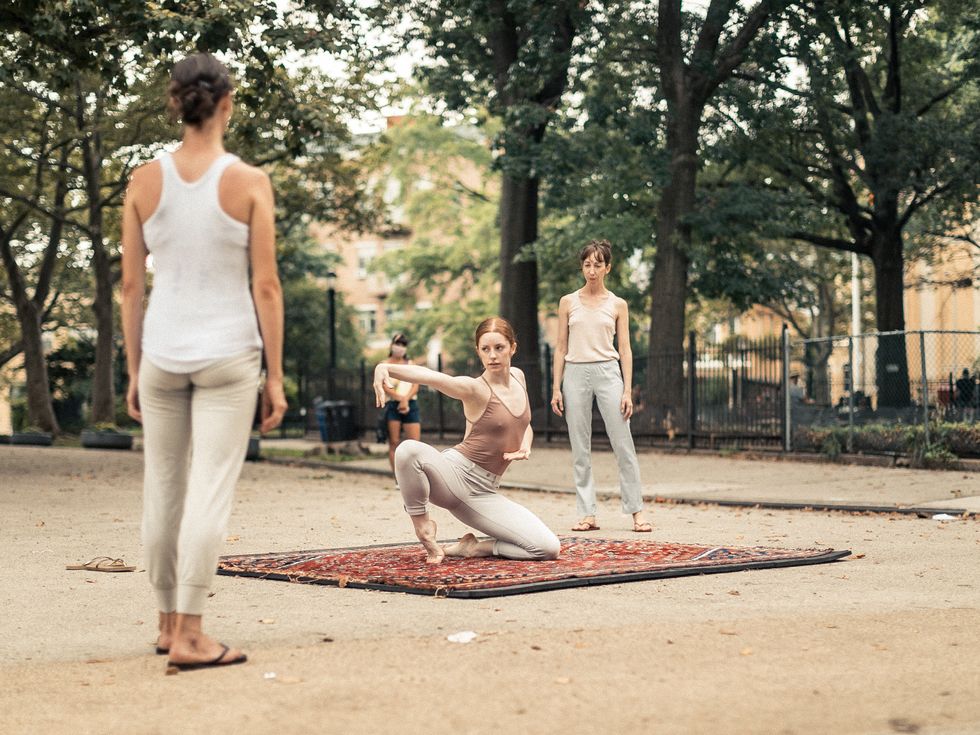 Dancer Victoria Sames at McCarren Park
Dancer Victoria Sames at McCarren Park
Charles Rousel, Courtesy Lamb
Do you consider this site-specific work?
I’ve never been drawn to doing site-specific work because humans can get lost when they are swimming in a larger space. I’ve never done outdoor performance before; the rug really directs the focus.
What about the audiences?
Audience access is very important to me. I live in a working-class part of Harlem with a lot of immigrant families from Latin America, and last week we took the rug down to a volleyball court by the river at 160th street. It was so cool to see the neighborhood kids pulling their parents over to watch us. I love how dancing in public spaces is accessible to people who wouldn’t ordinarily encounter concert dance or ballet. Parents can bring tiny children to these shows, and kids love the rug.
Where will the rug travel once the temperature turns cooler?
Once it’s safe to move indoors, I can see performing in a museum rotunda. I think it will work well in a very large space where people can come and go.
How’s the rug holding up?
Thankfully, someone donated a much larger rug, 8×10. But it’s for special occasions.
